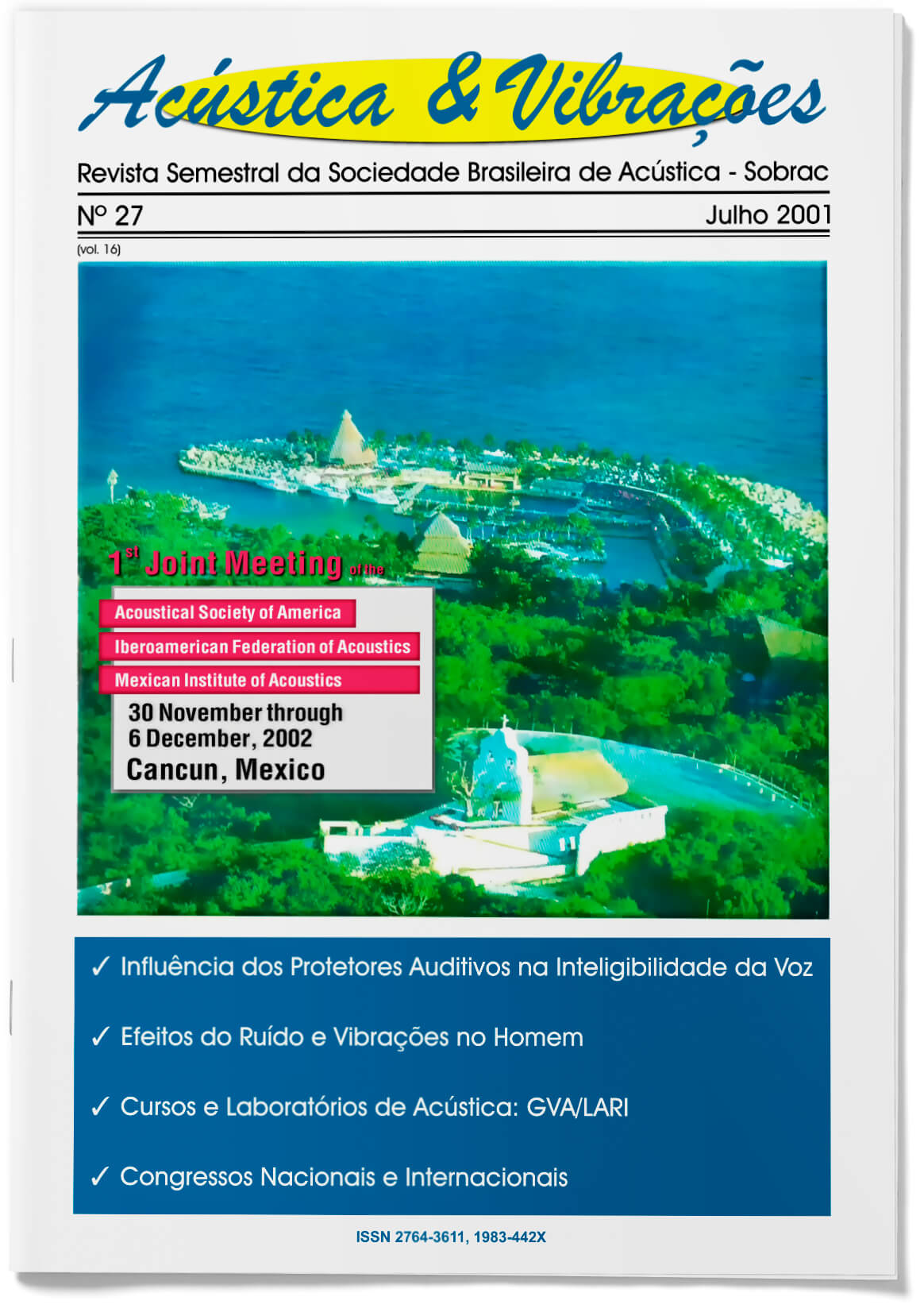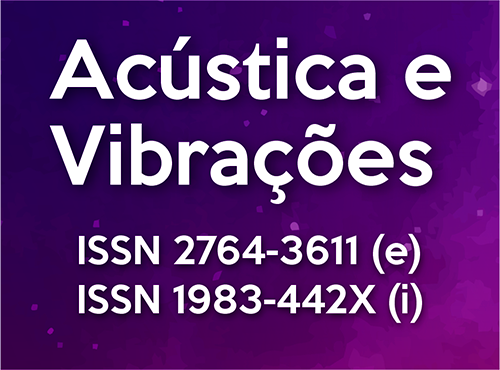Influencia de los protectores auditivos en la inteligibilidad de la voz
Palabras clave:
Equipos de protección individual, Tapones y conchas, Protectores auditivos, Inteligibilidad de la voz, Índice de discriminación del hablaResumen
Aunque no es el método más adecuado para combatir el ruido, los protectores auditivos son el equipo de protección auditiva personal más utilizado para prevenir la pérdida de audición inducida por el ruido (NIHL). Sin embargo, al mismo tiempo que protegen al trabajador, los protectores interfieren en la comunicación, influyendo en la comprensión de la voz.
Este estudio analizó la influencia de los protectores auditivos (tapones y conchas) en la inteligibilidad de la voz en sujetos con audición normal, en situaciones de silencio y con ruido ambiental. Para alcanzar este objetivo, se llevó a cabo un estudio experimental utilizando variables independientes:
- 5 condiciones de uso del EPI: sin protector, 2 tapones y 2 conchas;
- Un tipo de ruido de fondo: ruido rosa;
- 4 niveles de prueba: 60, 70, 80 y 90 dB(A);
- 6 relaciones señal/ruido (S/N): sin ruido, +5, +10, cero, -5 y -10 dB;
- 5 repeticiones para cada caso, en total 600 ensayos, con 10 monosílabos en cada uno. La variable medida fue el porcentaje de palabras (monosílabos) correctas en la prueba. Este porcentaje se denominó índice de discriminación del habla (IDH)". Las pruebas se realizaron en el laboratorio de acústica y vibraciones del campus de Bauru de la Unesp.
Citas
ANSI S3.2-1989, "Method for Measuring the Intelligibility of Speech Over Communication Systems”- Acoustical Society of America, New York, 1989.
ANSI S3.5-1997. "Methods for Calculation of the Speech lntelligibility Index, 1997.
Abel, S.M. and Spencer, D. L. – Speech understanding in noise with earplugs and muff in combination. Applied Acoustics, 57, p.61-68, 1999.
AbeI, S.M., Alberti, P.W.; Haythornthwaite, C.; Riko, K. Speech lntelligibility in noise: Effects of fluency and hearing protector type. Journal of the acoustical Society of America, 71 (3), p.708-715, 1982. doi: 10.1121/1.387547.
Acton, W.I. Effects of ear protection on communication. Annals of Ocupational Hygiene, 10, p.423-429, 1970.
Ballou, G. (Ed.) – A New Audiocyclopedia. Howard W. Sarns, 1987.
Barelli, P.A. e Ruder, L. L. – Medico-Legal Evaluation of Hearing Problems. The Eye, Ear, Noze and Throat Monthly, 49, (9): 398-405, 1970.
Barros C. J. O. – Análise espacial do controle da poluição sonora em Belo Horizonte, Anais do XIX Encontro da Sobrac, Belo Horizonte. Vol. 1, p. 380-385, 2000.
Beranek, L.L. Application of NCB Noise Criterion Curves. Noise Control Engineering Journal, v. 33 (2), p. 45-56, 1989b. doi: 10.3397/1.2828442.
Beranek, L.L. Balanced Noise-criterion (NCB) Curves. Journal of the Acoustical Society of America, v.86 (2), p. 650-664, 1989a. doi: 10.1121/1.398243.
Beranek, L.L. – Acoustic Measurements, Cambridge, J. Wiley ed, 1949.
Berger, F. H. – Respostas a perguntas e queixas com relação a audição e a protetores auditivos – Parte 1, 2 e 3, Revista de Acústica e Vibrações, n°16, p.3-22,dezembro de 1995.
Berglund, B. and Lindvall, T. – Noise as Public Health Problem, voI 5, Swedish Council for Building Research, Stockholm, 1990.
Byrne D. C. e Driscoll, D.P. Acoustical considerations for effective emergency alarm systems in na industrial setting, CAOHC Update, Canadian Centre for Occupational Health & Safety – CAOHC Update, vol. 9, n° 3, 1998. Disponível em: http://www.caohc.ca . Acesso em 28/06/2000.
Campanella, A. J. – “Getting the message through”. Sound and Video Contractor, vol 6, N° , janeiro, p.35-45, 1988.
Casali, J.G. e Berger, E.H. Technology advancements in hearing protection circa 1995: active noise reduction, frequency/amplitude-sensitivity and uniform attenuation. American Industrial Hygiene Association Journal, 57, p. 175-185, 1996. doi: 10.1080/15428119691015115.
Casali, J.G. – Seeking the sounds of silence. Virginia Tech Research, vol. 2, n° 1, january/february, 1994.
Ceypek, T; Kuzmarz, A.J.; Lepkowski, A. Szymezyk, K. The influence of ear protectors on the detectability of acoustic signals in noise, Medyeyna Pracy, XXV, p.47-51, 1974.
Cia de Áudio – CD N.° 03 com ruído. São Paulo: Cia de Áudio, 1997.
Coleman, G.J.; Graver, R.J.; Collier, S.G.; Golding, D.; Mc Nicholl, A.G.;,: Simpson. G.C.; Sweatland, K.F; Talbot, C. F. Communications in noise environments, Inst. Occup. Med., Edinburg, 1984.
Coles, R. R. e Rice, C.G. Earplugs and impaired hearing. Sound and Vibration, 3, p. 521-523, 1965.
Egan, J. – Articulation testing methods, Psycho-acoustic Laboratory, Report OSRD n.° 3802, Harvard University, 1944. doi: 10.1288/00005537-194809000-00002.
Fernandes, J.C. Conforto Acústico e Comportamento, In: Anais do Encontro Anual de Etologia, vol. I, 1993, Bauru, Anais... Bauru, 74-84; 1993.
Fernandes, J. C. Inteligibilidade Acústica de Ambientes. Apostila do Curso de “Inteligibilidade Acústica de Ambientes” apresentado durante o XlX Encontro da SOBRAC — SOBRAC 2000 — Belo Horizonte 54 páginas, 2000.
Fletcher, H. Speech and hearing communication. New Jersey; D. Van Nostrand, 1953.
Forshaw, S.E. Listening for machinery malfunctions in noise while wearing ear muffs. tech. Rep. Dept. Nat. Defence, Canada, 1977.
FRENCHSTANDARD — Vocabulaire lel’ acoustique physiologique et psychoacoustique. Norme S31—105/CEI 286—16, june 1988.
Gerges, S. N. Y. Protetores Auditivos: Recomendações para seleção, uso, cuidado e manutenção. Revista Cipa, 236: 20, 1999.
Gerges, S. N. Y. – Ruído: Fundamentos e Controle. Samir N. Y. Gerges: Florianópolis, 1992.
Gerges, S. N. Y. – Protetores Auditivos. Disponível em: http://www.animaseg.com.br. Acessado em 19/10/2000.
Goffard, S. J. e Egan, J. P. – Procedures for measuring the intelligibility of Speech. Psycho-acoustic Laboratory, Report n.° PNR 33, Harvard University, 1947.
Grom – Aplicações dos equipamentos da marca Grom. Disponível em: www.grom.com.br. Acessado em janeiro de 2001.
Hashimoto, M; Lazarus, H.; Schubelus, M. – The effect of noise and the wearing of ear protectors on verbal communication. Noise Cont. Eng. Journal, 23 (2), p. 181-196, 1975.
Jrenum – Improvement of Speech Intelligibility during high noise in the low frequencies when using a hearing protector. Jrenum hearing protector, 2000.
Karmy, S. J. e Coles, R. R. A. Hearing protection – factors affeting its use. In: Man and Noise. Torino: Ed. Minerva Médica, 1976.
Kroes, P; Fleming, R.; Lempert, B. – NIOSH Technical Information, List of personal Hearing Protectors and Attenuation Data – Publication 76-120, 1975.
Kryter, K. D. Effects of ear protective devices on the intelligibility of speech in noise. J. Acoust. Soc. Am., 18, p.413-417, 1946.
Lacerda, A. P. – Audiometria Clínica. Rio de Janeiro: Editora Guanabara Koogan, 1976.
Lambert, D.R. Preliminary study of the effects of ear protectors on recognition of shipboard machinery sounds. tech, Note 1464, Naval Undersea Centre, San Diego, 1975.
Lazarus, H. – Prediction of Verbal Communication in Noise – A development of generalized SIL. Curves and the quality of communication – Part 1 e 2, Applied Acoustic, 19, p.439—464 e Applied Acoustic, 20, p.245-261, 1987. doi: 10.1016/0003-682X(87)90062-4.
Maas, R. B. – Hearing protection in industry. Nursing Outlook, 9, p.281-293, 1961.
Mapp, P. – An issue of Safety – Sound and Video Contractor, vol 14, N.°11, october, p.22-26, 1996.
Martin, A. M.; Howell, K.; Lower, M. C. – Hearing protection and communication in noise. In: Disorders of audiology function. Academic Press, London, 1976.
Meyer Sound Laboratories “Speech Intelligibility Papers” Sections 1, 2, 3, 4 e 5 – Meyer Sound Laboratories, 1998a.
Meyer Sound Laboratories “Speech Intelligibility of the faculty assembly hall” – Meyer Sound Laboratories, 1998b.
National Coal Board – National Coal Board Medical Service Annual Report, 1975.
NIOSH – Preventing Occupational Hearing Loss – A Pratical Guide. National Institute for Occupational Safety and Health, october, 1996.
OSHA – Occupational Safety and Health Administration, Code of Federal Regulations, Title 29, Chapter XVII, Part 1919,Subpart G, 1971.
Pekkarinen, E.; Viljanen, V.; Salmivalli, A.; Suonpää, J. – Recognition of low-pass filtered words in a noisy and reverberant environment with and without earmuffs. Scandinavian Audiology, 19: 223-227, 1990. doi: 10.3109/01050399009070776.
PHS – Health people 2000: National health promotion and disease prevention objectives. U.S. Dept. Health and Human Services, Public Health Service. 91-50212, Washington, DC: U.S. Government Printing Office, 1991.
Pollack, I. – Speech communications at high noise levels: The roles of a noise-operated automatic gain control system and hearing protection. Journal of the Acoustical Society of America, 29, 1324-1327, 1957.
Precision Laboratories – Sonic II Hearing Protectors. Disponível em: http://www.precisionlab.com. Acesso em 28/06/2000.
Russo, I e Behlau, M. Percepção da Fala: Análise Acústica. São Paulo. Ed. Lovise, 1993.
Santos, T.M.M. Houtgast, T. – Mutual dependence of the octave-band weights in predicting speech intelligibility – Speech Communication, Volume 28, June, p. 109-123, 1999.
Sugden, D.B. Some notes on the provision of personal hearing protector for fettlers at an iron foundry. Ann. Occup. Hyg., 10, p. 263-268, 1967. doi: 10.1093/annhyg/10.3.263.
Suter, A. H. Noise and its Effects. Administrative Conference of United States. Disponível em: http://www.nonoise.org/library/suter/suter.htm. Novembro de 1991. Acesso em 28/06/2000.
Suntrillium Software Corporation. Software Cool Edit 2000. Phoenix (USA), 2000.
Talamo, J. D. C. Hearing in tractor cabs: attenuation and masking effects. National Institute of Agricultural Engineering, Silsoe, Bedford, 1975.
Vela, A.; Arana, M.; Garcia, A. – Pruebas objectivas de inteligibilidade de auditórios em idioma castellano. Anais do 1° Congresso Iberoamericano de Acústica e 18° Encontro da Sobrac, vol. 1, p.435-438, 1998.
Vitória – Dados sobre reclamações da Secretaria de Meio Ambiente da Prefeitura de Vitória (ES). Disponível em: www.vitoria.es.gov/secretaria/meio/balanco. Acessado em 02/01/2001.
Wilde, G. e Humes, E. Application of the articulation index to the speech recognition of normal and impaired listeners wearing hearing protection. J. Acoust. Soc. Am., 87 (3), p. 1192-1199, march, 1990. doi: 10.1121/1.398793.
Wilkins, P. The effects of wearing hearing protectors on the perception of warning sounds. Ph. D. Thesis, Univ. Southampton, 1980. doi: 10.3109/01050398109076160.
Wilkins, P. e Acton, W.I. – Noise and accidents – a review. Ann. Occup. Hyg., 2, p.249-260, 1982.
Wilkins, P. e Martin, A. M. Hearing protection and warning sounds in industry – a review. Applied Acoustics, 21, p.267-293, 1987. doi:10.1016/0003-682X(87)90050-8.
Wilkins, P. e Martin, A. M. The effects os hearing protection on the perception of warning sounds. In: Personal Hearing Protection in Industry. New York: Ed. Raven, p. 339-369, 1982.
Publicado
Cómo citar
Número
Sección
Licencia

Esta obra está bajo una licencia internacional Creative Commons Atribución-NoComercial-CompartirIgual 4.0.





